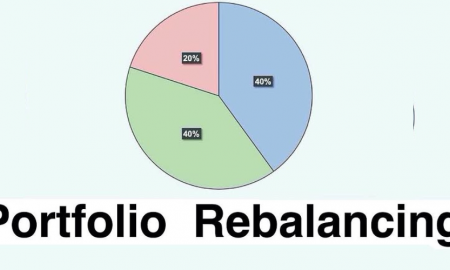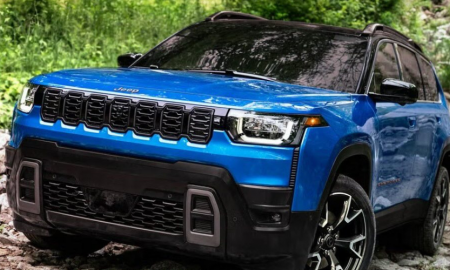
Things To Know About Pay-As-You-Drive Motor Insurance

The car insurance industry keeps evolving to serve its customers. The move from paper-based insurance to a digital platform is a prime example of this evolution. The regulating body and the insurers work towards serving potential and existing policyholders’ needs and making their insurance experience satisfactory. The Pay As You Drive Car Insurance Policy is a recent example directed toward offering a customized car insurance policy.
A pay-as-you-drive motor cover is an assorted comprehensive insurance policy that charges the premiums based on the usage of your vehicle. The policy has two components: third-party cover and own-damage cover. Such policies are already prevalent in developed nations worldwide and are gaining momentum in India.

Pixabay/ Pexels | A pay-as-you-drive motor cover is an assorted comprehensive insurance policy that charges the premiums based on the usage of your vehicle
Third-party Insurance:
In India, insuring a vehicle is important. It is a legal requirement, and you can be penalized for not following the rules. Therefore, you must make sure to have your vehicle covered with at least a Third-party Car Insurance Policy. Such a policy covers injuries to third parties and damages to their property caused by the insured vehicle.
Comprehensive Insurance:
A Comprehensive Plan is your second option. It is a wide-ranging motor insurance policy. And it includes the law-required cover. Its advantage is that the policy offers Own Damage cover. This ensures protection against financial losses in case of damages to the insured car. Such damages can be due to calamities, fire, vandalism, etc. The policy also covers theft.

JESHOOTS.com/ Pexels | PAYD encourages people to use their vehicles less by rewarding drivers who drive less
The third-party cover is mandatory, and the premium is determined by the Insurance Regulatory and Development Authority of India as per the engine capacity. At the same time, the own-damage premium is determined by actual usage or distance driven. A telematics device, which is installed in your vehicle, monitors the utilization of the vehicle against the total number of kilometers covered as per the policy terms and conditions.
Telematics policies primarily use GPS technology to measure how a vehicle is being driven; insurers then use this information to make decisions about risk based on driving performance. This information is combined with other traditional risk factors, such as a driver’s age and where they live, to set premiums. ‘Safe’ drivers usually benefit from lower premiums than ‘less safe’ drivers.

mentatdgt/ Pexels | Vehicle insurance is generally considered a fixed cost concerning vehicle use
Insurers will assess driving performance differently, but most will consider factors like the number of miles driven, the types of roads used, and speed and braking patterns. To buy such a policy, you must go through the standard KYC procedures and fill out the consent form when buying or renewing your existing policy. The pay-as-you-drive policies are available on the insurers’ websites, online aggregators, and other offline distribution channels.
More inCar Insurance
-
`
Trump’s Tariffs Could Cause a Spike in Car Insurance Prices in 2025
Car insurance premiums have already been rising, and 2025 may bring even higher costs for drivers. President Donald Trump’s proposed import...
March 15, 2025 -
`
Tesla Files for Ride-Hailing Service in California, Featuring Human Drivers
Tesla has taken a new step in the ride-hailing industry by applying for a permit to operate a human-driven service in...
March 15, 2025 -
`
Mercedes-Benz Cuts Costs, Prioritizes Combustion Engines for Profit Boost
The automotive landscape is shifting, and one major player is recalibrating its strategy to navigate the evolving market. In a bid...
March 8, 2025 -
`
The Hidden Downsides of Delaying Social Security Until 70
Many people are told to hold off on claiming Social Security until they reach 70 to receive the highest possible monthly...
March 8, 2025 -
`
Will Louisiana’s Car Insurance Crisis Get Worse Due to Tariffs?
Tariffs often impact industries in unexpected ways, and Louisiana’s car insurance market might face new challenges because of them. Although most...
March 2, 2025 -
`
Is Tesla’s Self-Driving Software Safe? Cybertruck Crash Raises Doubts
A recent Tesla Cybertruck accident has sparked concerns about the company’s self-driving technology. The incident occurred in Reno, Nevada, when a...
March 2, 2025 -
`
Should I Rebalance My Portfolio Alone or Seek Professional Help?
Managing investments requires a well-planned strategy, especially when nearing retirement. Many investors wonder whether they should handle portfolio rebalancing on their...
February 22, 2025 -
`
Auto Industry Faces More Challenges in 2025, Experts Warn
The auto industry is heading toward a challenging 2025, with multiple factors reshaping its landscape. Tariff threats, rising costs, and obstacles...
February 22, 2025 -
`
Car Insurance Rates Surge Across 5 States – Are You Affected?
Car insurance rates have surged dramatically across the U.S., with some states experiencing historic increases in 2024. Minnesota and Maryland have...
February 15, 2025















You must be logged in to post a comment Login